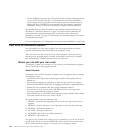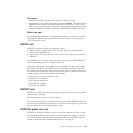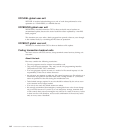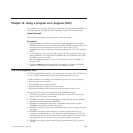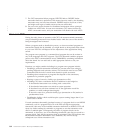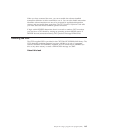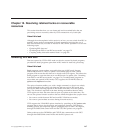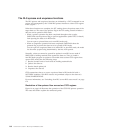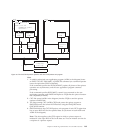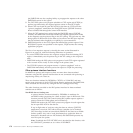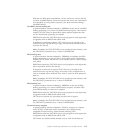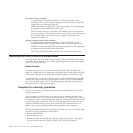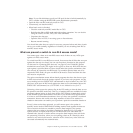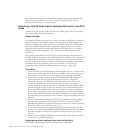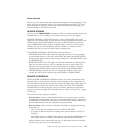The RLS quiesce and unquiesce functions
The RLS quiesce and unquiesce functions are initiated by a CICS command in one
region, and propagated by the VSAM RLS quiesce interface to other CICS regions
in the sysplex.
When these functions are complete, the ICF catalog shows the quiesce state of the
target data set. The state of the quiesce flag in the ICF catalog controls whether a
data set can be opened in RLS mode:
v When a quiesce operation has been completed throughout the sysplex,
SMSVSAM sets the quiesced flag to prevent applications (either CICS or batch)
from opening the data set in RLS mode.
You can open a quiesced data set in non-RLS mode only.
v When an unquiesce operation has been completed, SMSVSAM clears the
quiesced flag to permit the data set to be opened in RLS mode.
You can open an unquiesced data set in either RLS or non-RLS mode, the mode
for the entire sysplex being determined by the first ACB opened.
Normally, a data set cannot be opened for update in non-RLS access mode if
SMSVSAM is holding retained locks against the data set. Thus, to enable a
non-RLS batch program to update a recoverable data set that CICS regions have
open in RLS mode, take the following steps:
1. Resolve shunted units of work that are holding retained locks
2. Quiesce the data set
3. Run the batch update job
4. Unquiesce the data set
CICS transactions that try to access a quiesced data in RLS-mode fail with a
NOTOPEN condition. Non-RLS accesses are permitted subject to the data set’s
VSAM SHAREOPTIONS.
For more information, see “Switching from RLS to non-RLS access mode” on page
172.
Illustration of the quiesce flow across two CICS regions
Figure 16 on page 169 illustrates the operation of the CICS RLS quiesce operation.
The notes that follow explain the numbered points.
168 CICS TS for z/OS 4.1: Recovery and Restart Guide



